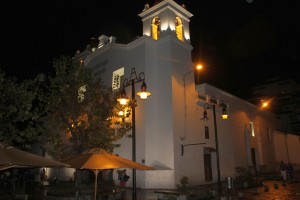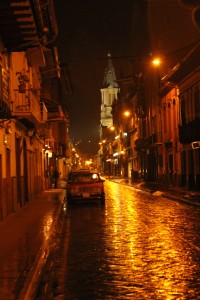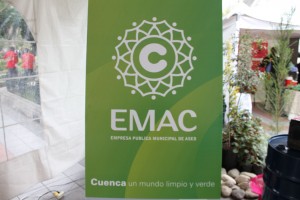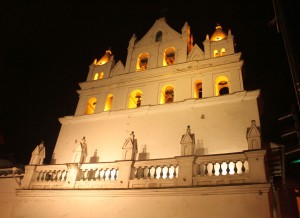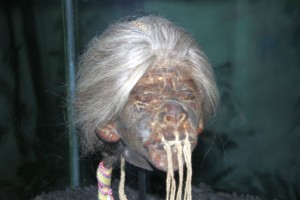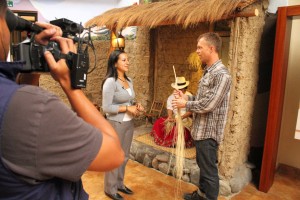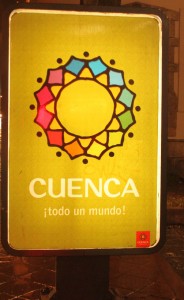
Cuenca is Ecuador’s 3rd largest city with around 500,000 residents. A lot of foreigners retire here because you don’t need a car (taxis are cheap), the weather is temperate (warmer than Quito but not as warm as Guayaquil) and it’ a cleaner city than most in Ecuador. In fact this historic town has a pretty impressive recycling program with a company called EMAC working in partnership with the local government.
While we were in town, EMAC was throwing a little celebration and had information booths set up in one of the main plazas. After our conversation in Baños with the guys from La Casa Verde, we were even more curious about recycling and environmental conservation efforts in Ecuador, so we interviewed the President and a few key staff of EMAC who filled us in.
Through the event they were hoping to provide education about recycling efforts in Cuenca, fully aware that without the residents’ cooperation, their best efforts would be futile. I was pleased to hear that plastic bottles were recyclable in Cuenca. We had been drinking a lot of bottled water and I was feeling a tad guilty. I had been trying to figure out another solution to drinking clean, potable water while on the road.
Later we took some footage of the wonderful, Colonial sites and historical architecture along Cuenca’s cobblestone streets.
Then we headed over to the PumaPungo Museum to see the impressive Inca Ruins, the only ones I’ve witnessed inside the city limits of a major city. The site had been partially restored by the museum and is definitely worth a visit if you find yourself in Cuenca.
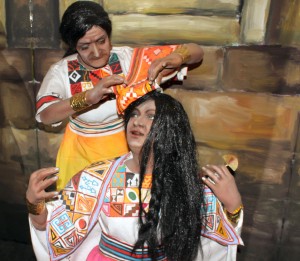
Our guide, Pablo, spoke English and filled me in on the fascinating culture and history of the Pre-Inca and Inca civilization. This particular site was where the Inca Princesses lived and had 11 servants each (all male). The garden was reproduced to look exactly like the Garden might have looked back in the Inca days with over 400 different species of plants.
Much of the food raised went to the birds in the sanctuary the museum runs where they rescue birds that have been injured or are retrieved by the police from people who try to illegally export these rare birds as illegal pets to places like the U.S. and Europe.
Later we visited the museum’s impressive archeology section which displayed some of the items recovered from the site.
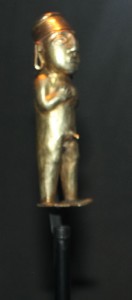
We also saw their exhibit of shrunken heads. They gave me a DVD on them and I can’t wait to hear and see more about this fascinating practice which was just outlawed on humans in Ecuador in the 1960s!
After the museum we headed over to the Panamanian Hat Factory and Store, Homero Ortega. Most people don’t realize the ubiquitous and famous Panama hat actually originated in Ecuador. It got its confusing and misleading moniker during the building of the Panama Canal when then U.S. President Teddy Roosevelt wore one while visiting the canal and its popularity soared.
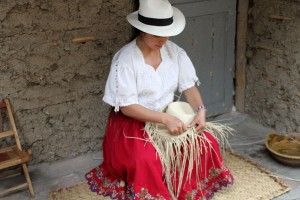
Even though the hat originates in Ecuador (Montecristo and Cuenca) people still confuse the hat with Panama, the port where the hat was exported back in the day and the name has stuck.
Cuenca has a large number of people who depend on the Panama Hat industry as they normally weave in their homes and then bring the hats to the Homero Ortega Company to be finished. The process is pretty cool to see first hand, which you can do at the factory. It can take as little as 2 days for some hats that might retail at $20 or as much as 6-8 months for hats that might retail as much as $1,000-$1,500 U.S. The difference is the quality of the weaving, as the more expensive hats have a more fine straw material which takes a long time to weave and requires more material.
Alicia Ortega S. is the founder’s granddaughter and current President of the company and she and her staff could not have been more gracious to us. They even gave us each a Panama hat as a souvenir. Incredible generosity and a great segment for the show.
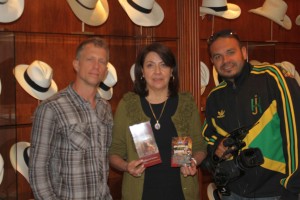
After that we pretty much called it a wrap. But I had one more shoot I wanted to do so I went along to this Gothic store called “Godos” close to our hotel to get a little info n the punk/metal and gothic scene in Cuenca for my side project “Punktology”.
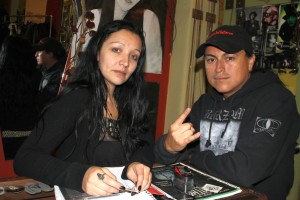
The owner’s were super cool. They let me have free run of the place and filled me in on the local metal and goth scene. In Cuenca it is really big it turns out which also helps explain all the teens and kids I saw running around town wearing black.
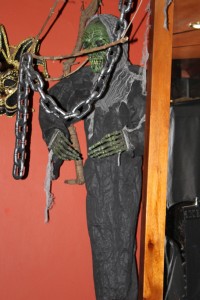
Cuenca is a really cool town. It’s big enough to have most of what you might want (it has an international airport) yet small enough that traffic and getting around isn’t an issue and it felt safe, even at night, in the old town. Of Course all the old precautions should be followed anywhere when traveling (don’t walk alone at night; don’t wear expensive jewelry, etc.). But all in all, I heartily recommend Cuenca as a safe, friendly and interesting destination.
